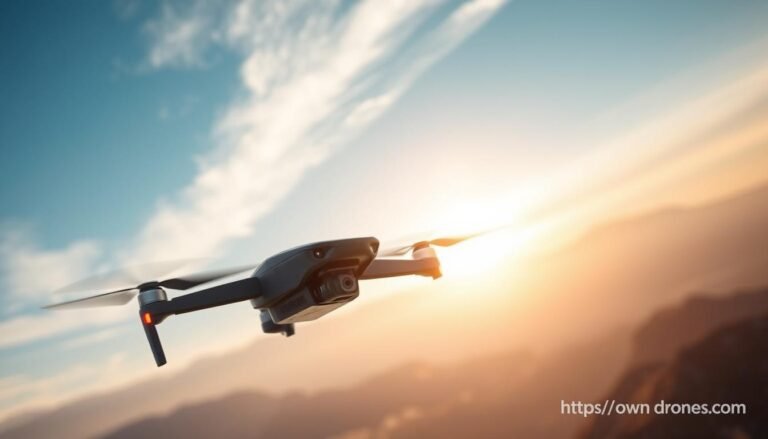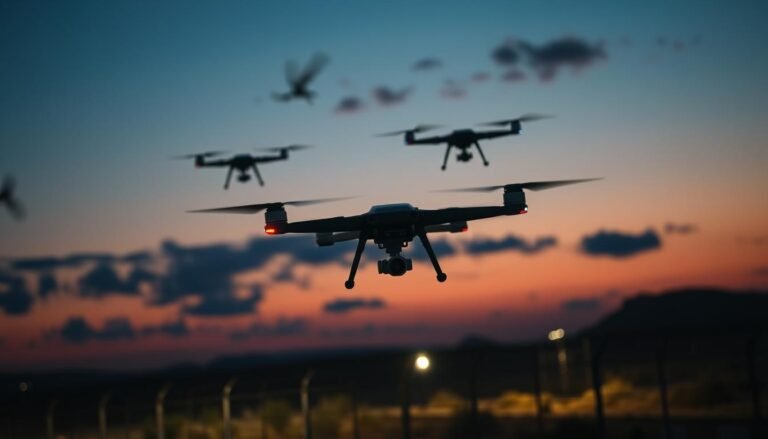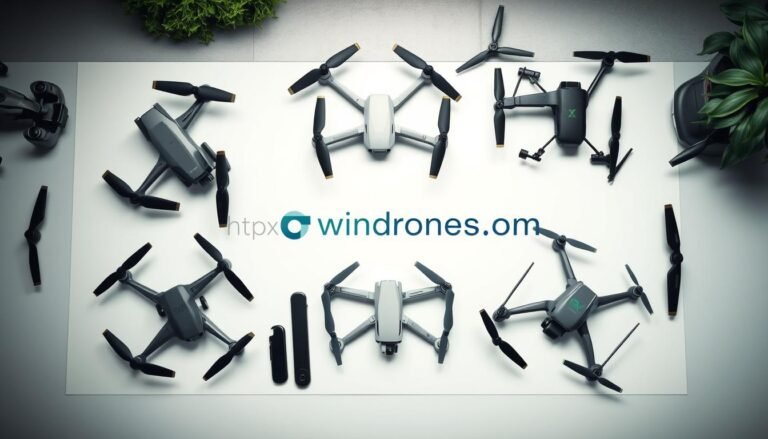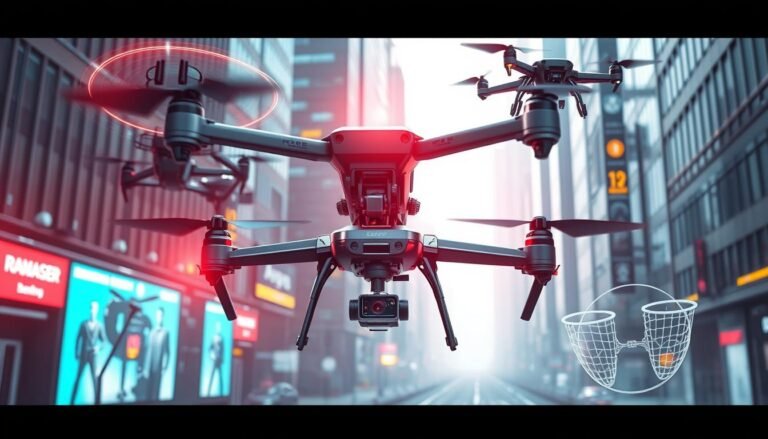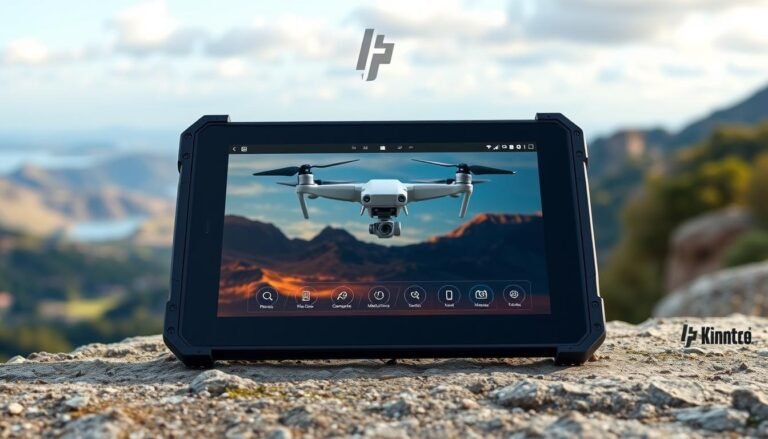ZMO VTOL Drone Plane First Flight So Cool Experience
My first time with the ZMO VTOL drone plane changed how I see drones. This aircraft is a big step forward in flying tech. It mixes new ideas with top-notch performance.
As someone who loves drones, the ZMO VTOL caught my eye right away. It can take off vertically and then fly forward smoothly. This makes it a big deal in exploring the skies.
The zmo-vtol-drone-plane-first-flight-so-cool experience showed me a drone that breaks the mold. It’s not just any drone. Its smart design and advanced tech wowed me from the start.
Key Takeaways
- Revolutionary vertical take-off and landing technology
- Exceptional versatility in aerial navigation
- Advanced hybrid aircraft design
- Cutting-edge unmanned aerial vehicle capabilities
- Seamless transition between vertical and forward flight modes
Understanding VTOL Technology and Its Revolutionary Impact
Aviation has seen a big change with the arrival of Vertical Take-off and Landing (VTOL) systems. These new designs are a big step forward in aerodynamics. They mix the old ways of flying with new, flexible ways.
VTOL tech is special because it can do things regular planes can’t. It lets planes fly in ways that were once thought impossible. This changes how we think about flying.
Basic Principles of Vertical Take-off and Landing
VTOL tech lets planes do amazing things. They can:
- Launch vertically without a runway
- Hover precisely in mid-air
- Transition seamlessly between vertical and horizontal flight
- Operate in confined or challenging terrain
Evolution of VTOL in Modern Aviation
VTOL tech has come a long way. It started with military tests and now we see it in everyday use. It’s changed how we think about flying.
| Decade | VTOL Development Milestone |
|---|---|
| 1950s | Initial experimental designs |
| 1960s | Military research intensifies |
| 2000s | Commercial drone applications emerge |
| 2020s | Advanced autonomous VTOL systems |
Advantages Over Traditional Drone Systems
VTOL systems have big benefits:
- They are more flexible
- They need less setup
- They use less energy
- They can fly better in tight spaces
“VTOL technology represents the future of aerial mobility, breaking traditional boundaries of flight.” – Aviation Innovation Journal
These amazing techs are changing what’s possible in the skies. We can’t wait to see what’s next.
ZMO VTOL Drone Plane Technical Specifications
The ZMO VTOL drone plane is a game-changer in the world of drones. It combines vertical take-off with fixed-wing efficiency. This makes it a standout in the field of hybrid aircraft.
- Advanced flight control system with Cube Orange flight controller
- Matek M8Q-CAN GPS navigation module
- Herelink radio system with extended range capabilities
- Integrated GoPro camera with HDMI output
Let’s look at the key parts of this drone:
| Component | Specification |
|---|---|
| Flight Controller | Cube Orange |
| GPS Module | Matek M8Q-CAN |
| Airspeed Sensor | Matek ASPD-4525 |
| Power Management | Castle Creations BEC for servos |
This drone can switch easily between flying vertically and horizontally. Specialized servo mechanisms enable smooth operational shifts. This makes it great for many different uses in the air.
“The ZMO VTOL drone plane pushes the boundaries of unmanned aerial vehicle technology” – Drone Engineering Quarterly
When it comes to performance, the drone handles wind well. It also has a long signal range, over 40 km with the right antennas. It has different flight modes like FBWB and Loiter.
Safety Guidelines for First-Time VTOL Pilots
Learning to fly a VTOL drone is all about preparation and knowing the safety rules. As a pilot, your main job is to make sure flying your drone is safe and goes well.
Before you fly your VTOL drone, there are important safety steps to take. These tips will help you start your flying journey with confidence and skill.
Pre-Flight Checklist Essentials
Doing a detailed check before flying is key to safe drone use. Your checklist should cover:
- Battery charge level verification
- Signal transmission quality check
- GPS connectivity assessment
- Structural integrity examination
- Accessory functionality test
Weather Considerations and Limitations
The weather is a big factor in flying your drone. Wind, humidity, and temperature can affect how well your drone flies. Always check the weather before you fly.
| Weather Condition | Flight Risk Level | Recommended Action |
|---|---|---|
| Wind Speed > 15 mph | High Risk | Do Not Fly |
| Precipitation | Moderate Risk | Postpone Flight |
| Clear Skies | Low Risk | Proceed with Caution |
Emergency Procedures Overview
Being ready for emergencies is important in flying drones. Learn about emergency plans, such as:
- Immediate return-to-home function
- Signal loss recovery techniques
- Battery failsafe mechanisms
- Manual control override
“Safety is not an accident, but a deliberate and continuous process of preparation and awareness.” – Anonymous Drone Pilot
Remember, successful first flight testing requires patience, practice, and a commitment to safety.
My zmo-vtol-drone-plane-first-flight-so-cool Experience
My first flight with the ZMO VTOL drone plane was thrilling. As a drone lover, I was excited to see its special features.
The start of the zmo-vtol-drone-plane-first-flight-so-cool was amazing. I went through the pre-flight checklist carefully. This made sure I followed all safety steps:
- Checked battery levels
- Verified GPS signal strength
- Confirmed clear flying area
- Activated Return to Home (RTH) feature
The drone took off smoothly. The switch from vertical to fixed-wing flight was flawless. This showed the drone’s advanced design.
“Watching the ZMO VTOL effortlessly switch between flight modes was like witnessing aviation magic!” – My personal reflection
I learned a lot about flying the ZMO VTOL drone:
- Maintain visual line of sight at all times
- Avoid flying over populated areas
- Be cautious in strong wind conditions
- Always have a backup landing strategy
The flight controller worked great, thanks to the Pixhawk 4. I suggest starting in open areas. This will help you get used to the drone’s amazing features.
Return to Home (RTH) Feature Analysis
Understanding unmanned aerial vehicle technology is key. The Return to Home (RTH) feature is a critical safety tool. It helps drone pilots when they face unexpected challenges.
Understanding RTH Mechanics
The RTH feature works with great precision. When it’s turned on, the drone heads straight back to where it started. It has important features:
- Straight-line navigation without obstacle detection
- Altitude maintenance during return flight
- Ability to manually or automatically trigger the feature
Signal Loss Protocols
When the signal between the drone and controller breaks, RTH kicks in. It ensures the drone lands safely:
- Immediate return trajectory calculation
- Maintenance of preset altitude
- Precise landing at predefined coordinates
Safe Landing Procedures
The last step of RTH is landing. Pilots can adjust the drone’s descent for a smooth landing.
“Advanced RTH technology transforms possible flight risks into manageable scenarios for drone operators.” – Aviation Technology Experts
| RTH Feature | Functionality | Activation Method |
|---|---|---|
| Signal Loss Return | Automatic Recovery | Communication Interruption |
| Manual Activation | Pilot-Controlled Return | “SC” Switch Engagement |
| Landing Control | Multi-Axis Descent | Precise Coordinate Selection |
Flying in Challenging Weather Conditions

When flying a ZMO VTOL drone in tough weather, you need a solid plan and a good grasp of aerodynamics. The tech behind vertical take-off and landing faces special hurdles in changing skies.
“Mastering weather adaptation is the key to successful drone operations” – Drone Pilot Manual
Wind is the biggest hurdle for VTOL drones. I’ve learned that knowing the weather is key to flying well. When winds pick up, keeping the drone steady is a must.
- Check the wind direction before flying
- Keep an eye on the latest weather reports
- Use special aerodynamic features for balance
- Have a plan to return early in bad weather
High winds can really affect how well a drone can take off and land. Experts say to always follow strict wind for safe flying.
| Wind Speed | Flight Risk Level | Recommended Action |
|---|---|---|
| 0-5 mph | Low | Normal Operations |
| 6-10 mph | Medium | Cautious Flying |
| 11-15 mph | High | Consider Landing |
| 16+ mph | Critical | Abort Flight |
Remember, safety is more important than the thrill of flying. If you’re unsure, it’s best to keep your drone on the ground.
Advanced Flight Control Systems
The ZMO VTOL drone plane is a big step forward in drone design. Its advanced flight control systems change how we use drones. They give pilots more precision and control than ever before.
Remote Control Interface
The drone’s remote control is easy to use. It’s designed like professional aviation tech, making it simple to learn. It has features like:
- Ergonomic design for comfortable handling
- High-resolution touchscreen display
- Customizable control sensitivity
- Real-time telemetry feedback
GPS Navigation Features
The drone uses advanced GPS for navigation. This means pilots get:
- Precise waypoint programming
- Automatic return-to-home functionality
- Geofencing for restricted area protection
- Multi-satellite system compatibility
Flight Mode Options
The ZMO VTOL drone has different flight modes. This lets it perform well in many environments. The modes are:
- Vertical Take-off and Landing (VTOL) Mode
- Fixed-Wing Cruise Mode
- Autonomous Mission Planning
- Obstacle Avoidance Mode
“Our goal is to make complex aviation technology accessible and user-friendly.” – ZMO Drone Engineering Team
Aerial Photography and Video Capabilities
My experience with the ZMO VTOL drone showed its amazing ability for aerial photography. It’s a game-changer for capturing stunning visuals. Its design offers unmatched flexibility in aerial shots.

The drone’s advanced features make aerial photography easy. It has two 1 GHz computers for smooth, high-quality images. Its standout features include:
- Live HD video streaming up to half a mile
- GoPro direct control from ground station
- Smart Shots technology for cinematic footage
- Automatic tracking and filming capabilities
Photographers and videographers will love the drone’s Smart Shots modes. These include:
- Cablecam mode
- Orbit mode
- Selfie mode
- Follow Me mode
| Feature | Capability |
|---|---|
| Video Transmission | HD streaming to iOS/Android |
| Camera Control | Start/stop recording from ground |
| Safety Features | Pause button and “safety net” |
“Solo is the world’s first smart drone that makes professional aerial photography accessible to everyone.” – ZMO Drone Engineering Team
The drone’s advanced Pixhawk 2 autopilot system and dedicated Wi-Fi signal make aerial photography easy. I was impressed by its ability to capture professional-grade shots effortlessly.
Military and Commercial Applications
The ZMO unmanned aerial vehicle is a game-changer in military and commercial fields. Its design allows for amazing capabilities beyond what drones can usually do.
- Tactical reconnaissance missions
- Surveillance of restricted territories
- Real-time intelligence gathering
- Border security monitoring
In the commercial world, the ZMO VTOL drone shows its versatility:
- Geographic mapping and surveying
- Infrastructure inspection
- Agricultural monitoring
- Emergency response coordination
“The future of aerial technology lies in versatile, adaptable unmanned aerial vehicle systems that can operate across multiple environments.” – drone technology expert
The drone’s vertical take-off feature is key for military use. It lets the drone quickly start up in tough places. Its small size also means it can do many different tasks.
| Sector | Primary Applications | Key Advantages |
|---|---|---|
| Military | Intelligence Gathering | Long-range surveillance |
| Commercial | Infrastructure Inspection | Precise aerial mapping |
| Emergency Services | Disaster Response | Quick situational assessment |
The ZMO VTOL drone keeps getting better. It’s changing what drones can do in big ways.
Conclusion
My experience with the zmo-vtol-drone-plane-first-flight-so-cool has been truly groundbreaking. The vertical take-off and landing tech is a huge step forward for drones. It combines the best of both worlds, making drones more versatile and powerful.
This drone’s design opens up new possibilities in many fields. It’s great for aerial photography and advanced reconnaissance. I’ve seen how well it moves from flying up to flying forward, showing its amazing capabilities.
The ZMO VTOL drone is leading the way in drone tech. Its advanced systems and easy-to-use design show us what’s next in flying machines. It’s a big deal for anyone interested in drones, whether you’re a pro or just for fun.
Exploring with this drone has opened my eyes to the future of flying. The zmo-vtol-drone-plane-first-flight-so-cool is just the start of a big change in technology.

